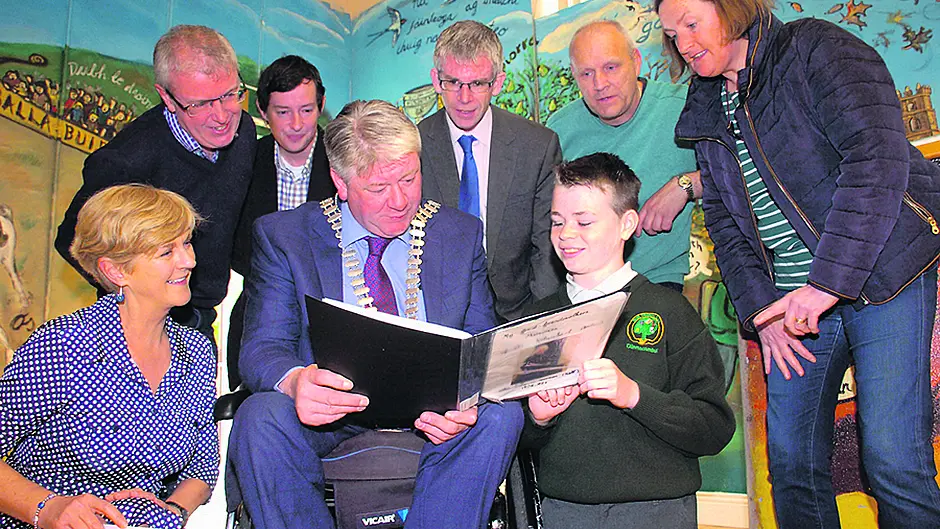Extraordinary stories about the people of West Cork are coming to light as part of an ongoing schools' history project organised by Skibbereen Heritage Centre
EXTRAORDINARY stories about the people of West Cork are coming to light as part of an ongoing schools’ history project organised by Skibbereen Heritage Centre, as part of Cork County Council’s Centenary and Creative Ireland programmes.
Over the past three years, local primary school children have documented their family stories and local community memories related to the turbulent years of Irish history from 1916 to 1923.
The ‘West Cork: Stories of the Revolution’ project invites primary school children to collect stories relating to the 1916-1923 period from their own area.
The project model is based on the highly successful Irish Folklore Commission which gathered so much important local history and folklore from schoolchildren in 1937.
Similarly, the current projet will create a valuable archive of local history and folklore which will be kept for posterity.
This is the third year of the project and, to date, 36 schools have participated, with over 600 children submitting stories collected from elders in their local communities about the revolutionary period.
Each year there is a competition to select a prize winning individual project and an overall winning school.
This year, Eoin Hurley of Schoil Phádraig Naofa Dunmanway was the overall winning student of the project, while Dromleigh NS won the schools’ category.
Eoin’s story is about his great-great grandmother, Nell Kelly’s memories of the Kilmichael ambush.
Nell Kelly lived in the house adjacent to the site of the Kilmichael ambush and she was just 11 years old at the time of the ambush on 28 November 1920.
Tom Barry called to the house that morning and told the Kellys to stay indoors. The family took brown bread and milk to Barry and his men during the day.
When the fighting kicked off that evening, Eoin recorded that ‘Nell and her family were terrified and hid under the table. As the house was so close to the action, bullets flew into the house knocking the whitewash off the walls’.
After the shooting stopped, Tom Barry came to Nell’s family home again, this time looking to remove the doors to use as stretchers for the dead and dying.
After the Ambush, the Kelly family left their home in fear of reprisals, as did many others in the area. The Kellys gathered their belongings and buried them in a trunk in a local bog. Their house, along with others in the area, was subsequently burnt by the Auxiliaries. Nell lost one of her shoes when she was on the run.
A student from Dromleigh NS, Lucia Duarte, wrote that ‘to her dying day, Nell said she lost her good Confirmation shoe as a result of the Kilmichael Ambush’.
Many of the students’ stories record how the people of the locality hid in fear over the weeks that followed.
Another Dromleigh student, Ciara Bradley, tells us her great-grandfather hid in Kilnamartyra because it was high up over Kilmichael and he could see which houses were on fire.
Ciara used the Dromleigh school register in her essay to show that no students attended the school over the following weeks while the people were in hiding. The school did not re-open until December 13th.
The vignettes recorded show how ordinary people’s lives were affected during these turbulent revolutionary times and are not confined to stories from the West Cork area.
Events from all over Ireland are included in the project, as well as many international stories. These include reports from the Polish revolution, the Spanish Civil War, India under British rule and even a family story of a Filipino tribal ritual.
On completion of the project, the students’ essays will be sent to Cork City and County Archive where they will be kept for posterity.
Skibbereen Heritage Centre’s website will also host a digital archive of the stories.
Margaret Murphy, William Casey, Sue Harrington and Terri Kearney make up the Skibbereen Heritage Centre project team and their hope is that this project will create a valuable resource which will be referenced in the future as the 1937 schools’ folklore project is today.
The project is extending to cover schools in the Clonakilty and Rosscarbery areas this winter.








